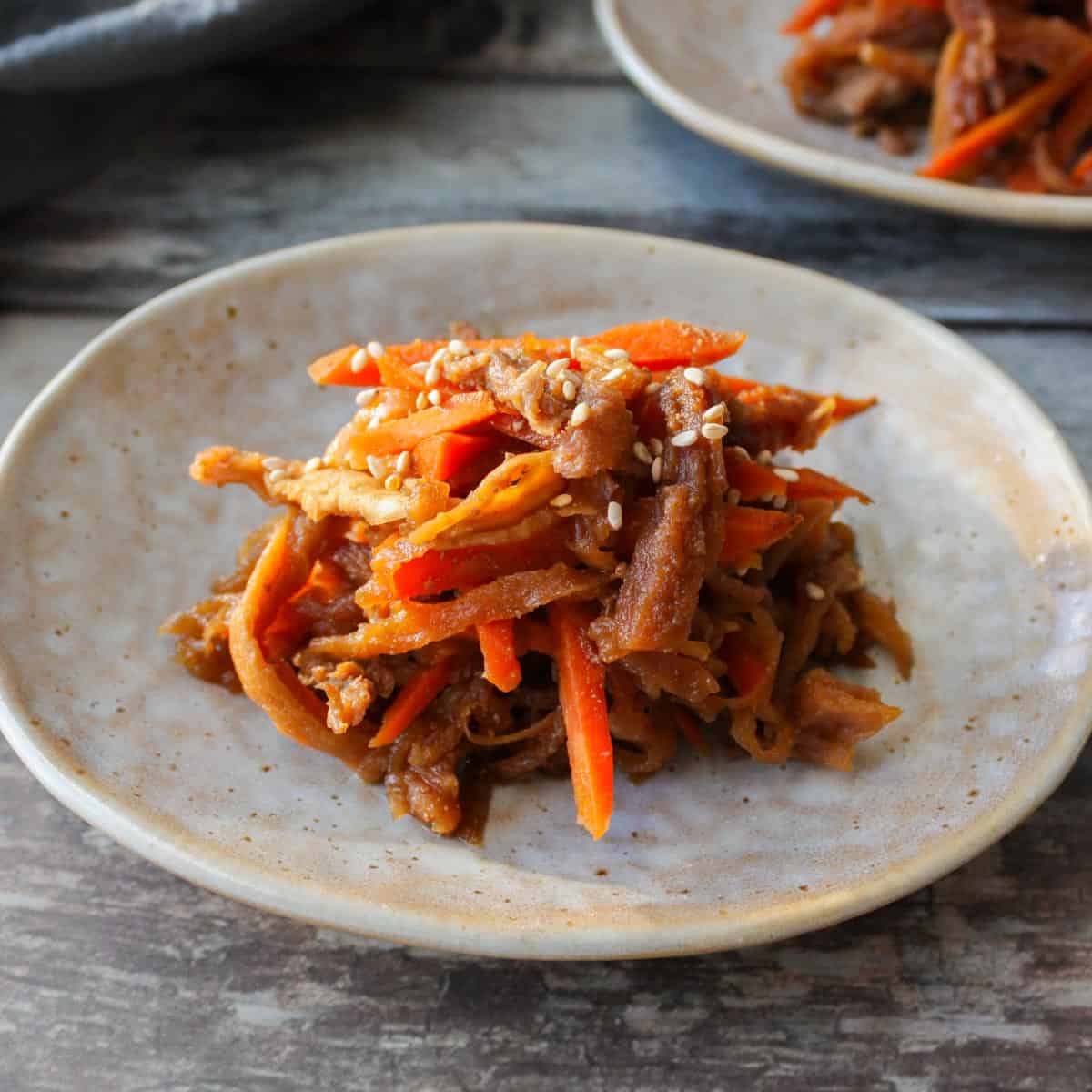Ingredients
Method
- Prepare the kiriboshi daikon: Rinse 2 ounces kiriboshi daikon to remove any dirt, then soak it in just enough water to cover. Let it sit for about 10 minutes. Be sure to use at least the amount of water you’ll need later—so if the recipe calls for 1 cup of the soaking water, make sure you rehydrate it with at least 1 cup (see Note 2).
- Prepare the other ingredients: While the daikon soaks, peel and cut 2 small carrots into thin strips. Cut 5 ounces sliced pork into 1-inch strips.
- Drain and cut the daikon: Once the daikon’s done soaking, save the soaking water. Squeeze out the excess water from the daikon with your hands and cut it into 2–3-inch strips if the pieces are too long.
- Saute the daikon and carrots: Heat a medium pot over medium heat, add oil, then stir-fry the daikon and carrots for 1 to 2 minutes to remove any extra moisture.
- Simmer with pork and broth: Add the sliced pork, 1 cup reserved water from soaking kiriboshi daikon, 1 tablespoon soy sauce, 1.5 tablespoons mirin, and 2 teaspoons dashi powder to the pot. Give everything a good stir, then cover with an otoshibuta (drop lid) if you have one (see Note 3). Let it simmer for about 10 minutes, or until the liquid reduces to about one-third.
- Let it sit and soak up the flavor: Turn off the heat and let the kiriboshi daikon rest at room temperature for 15 to 30 minutes. This helps it absorb all the savory goodness. You can serve it warm, chilled, or at room temp (see Note 4).
Notes
- (Note 1) Use Good Quality Dashi Powder: Go with a high-quality dashi powder made with all-natural ingredients—something like Kayanoya Dashi works great for the best flavor.
- (Note 2) Use Just Enough Water to Rehydrate Daikon: We want the soaking water to be as flavorful as possible since we’ll be using it in the dish. So, add just enough water to cover the kiriboshi daikon without diluting it.
- (Note 3) Otoshibuta: It’s a traditional Japanese lid that sits right on top of the food as it simmers. It helps everything cook evenly and keeps the ingredients from breaking apart or moving around too much. If you don’t have one, no worries—you can make a quick substitute by cutting a piece of parchment paper to fit your pot and poking a few holes in it for steam to escape.
- (Note 4) Let It Sit Before Digging In: The flavors get even better as the dish cools, so I recommend letting it sit for a bit before serving, ideally a day or until it cools down once. But if you’re hungry, it’s totally fine to enjoy it right away!
- Variations: Feel free to add other vegetables and/or proteins to this dish, such as chicken, deep-fried tofu, or shiitake mushrooms (or other mushrooms).
- To store: Once cooled, transfer them to an airtight container and keep them in the fridge for 3–4 days or in the freezer for up to 1 month.
- To reheat: When you're ready to eat, just enjoy it at room temperature or pop it in the microwave!
